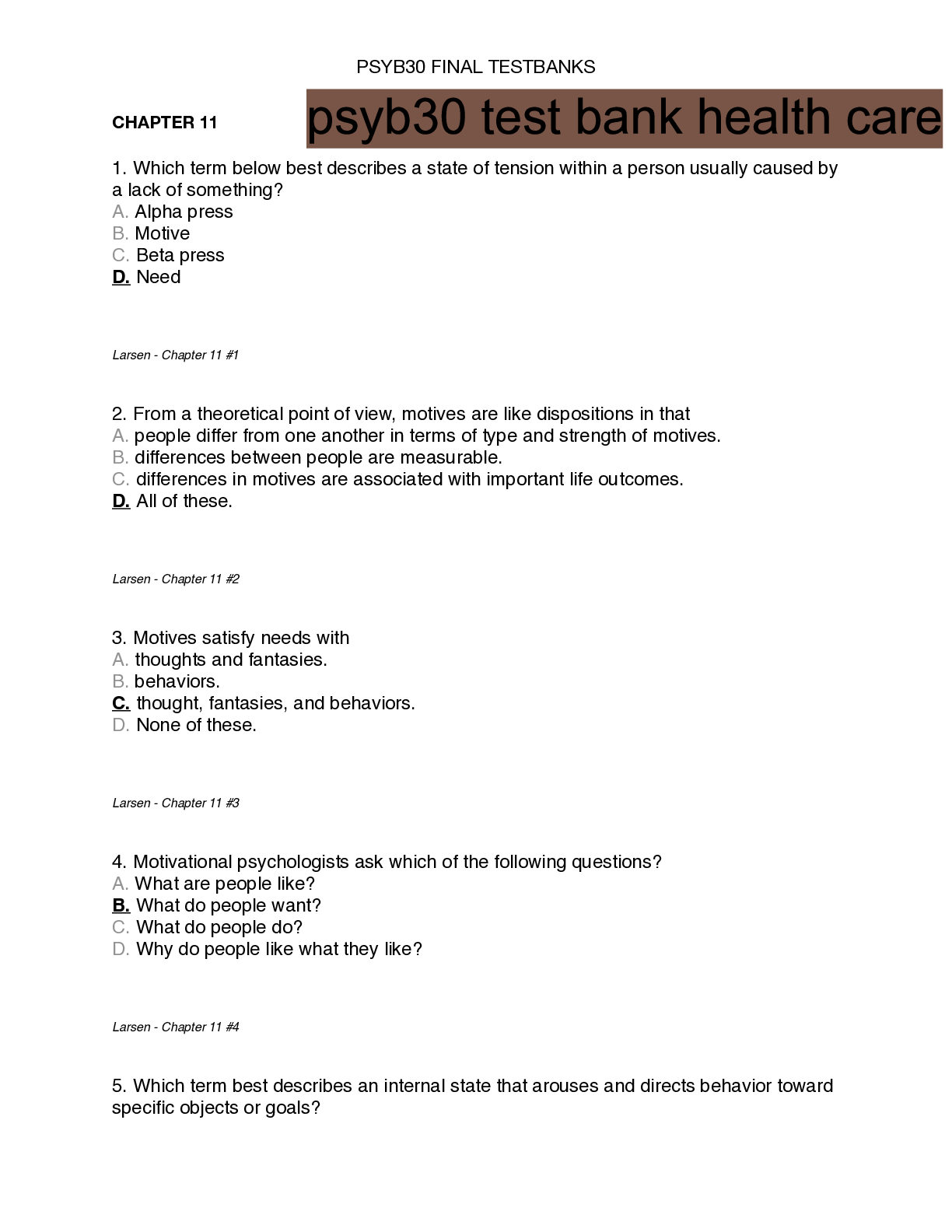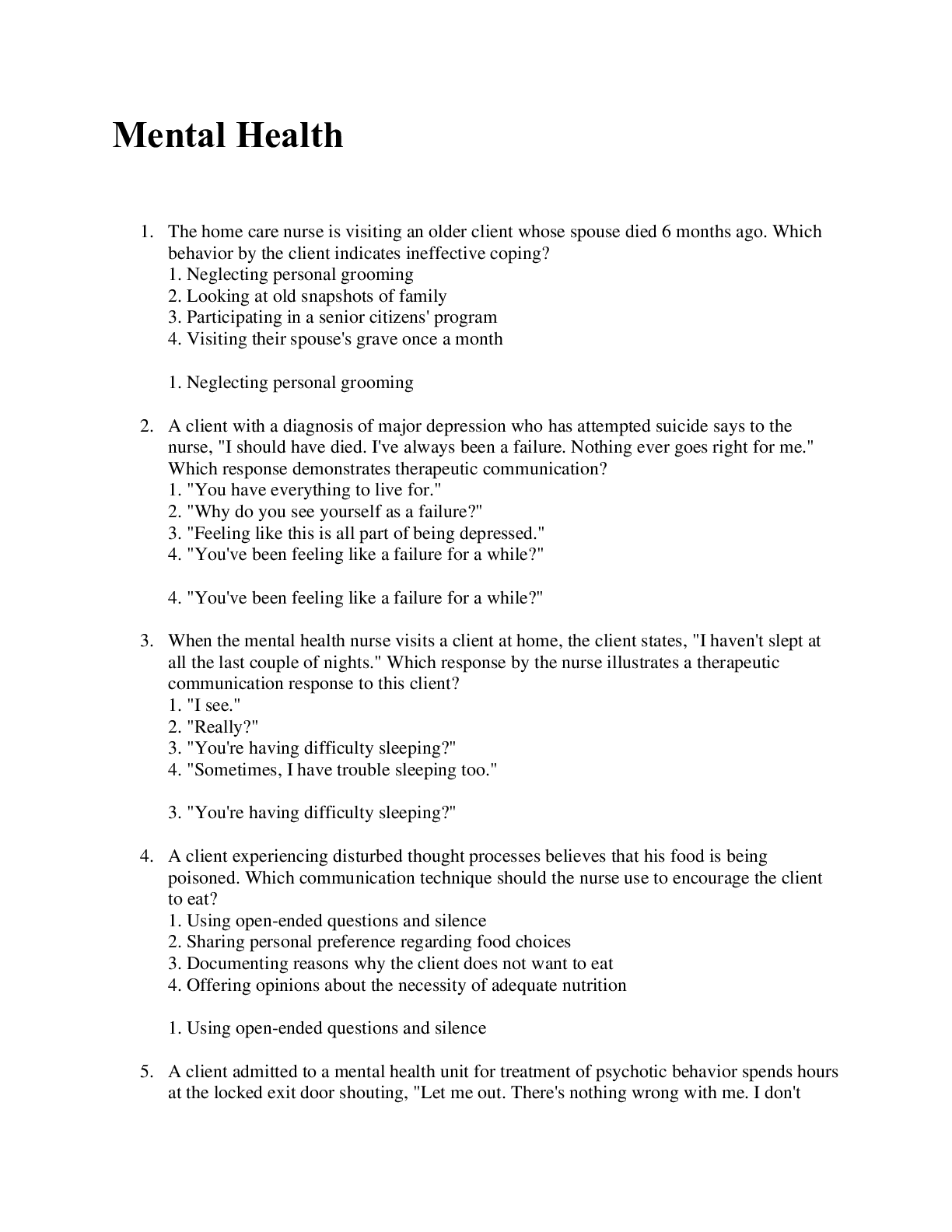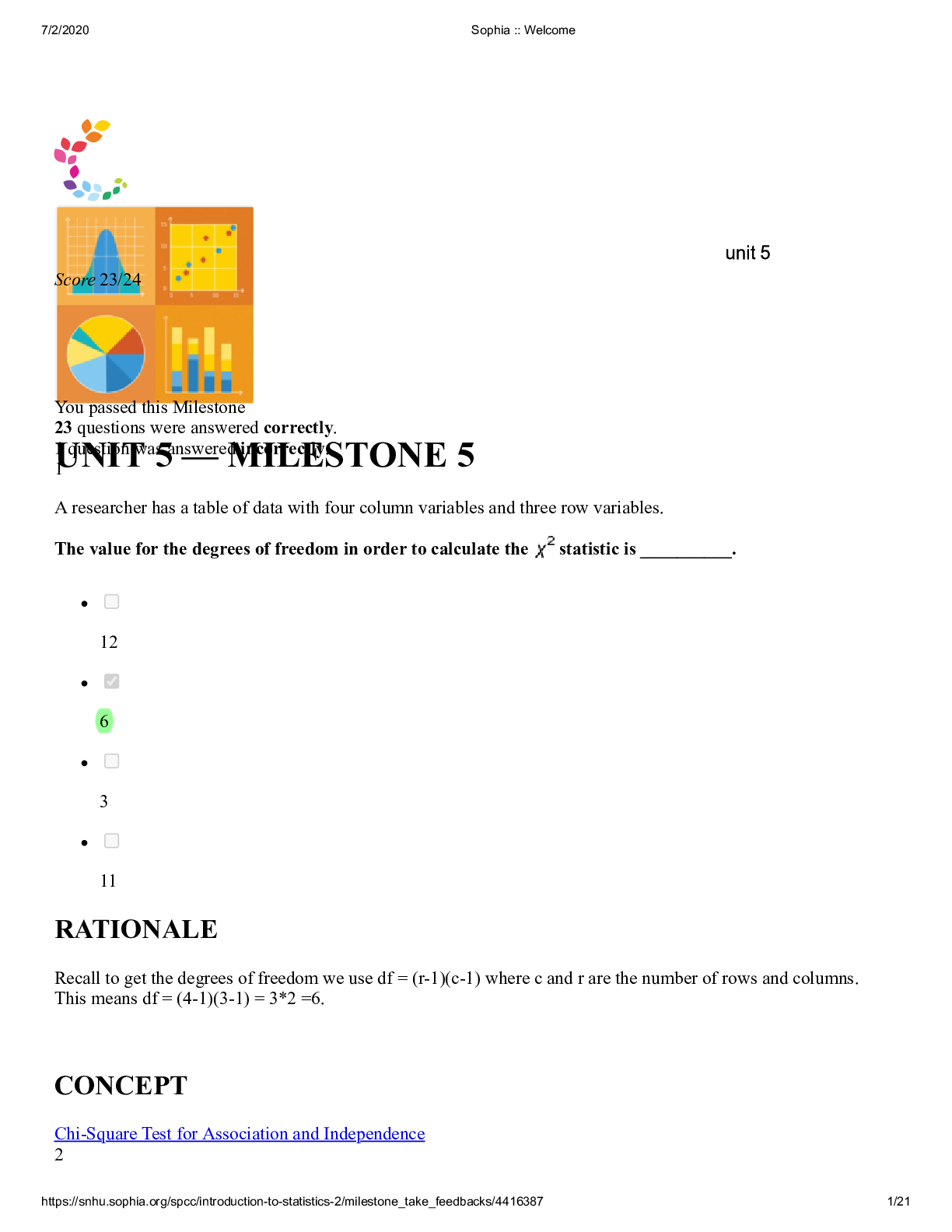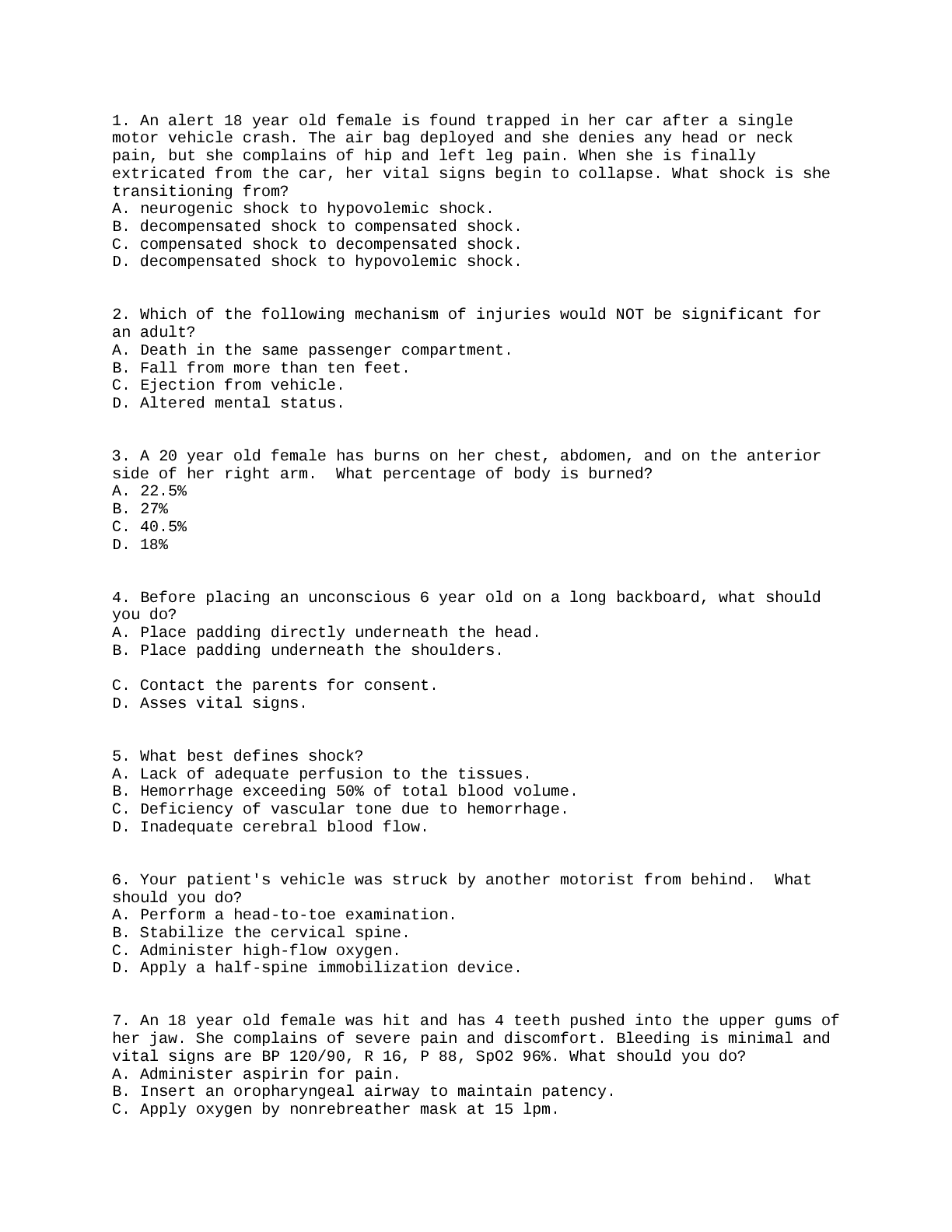Biology > QUESTIONS & ANSWERS > BIOL235_Assignment_2_94% questions with answers 2022 (All)
BIOL235_Assignment_2_94% questions with answers 2022
Document Content and Description Below
Acknowledgement of Academic Responsibility Answers to assignment questions must be original; that is, you must write them all yourself. You can base your answers on information in the course textboo... k or other sources, but if you use sources other than the textbook, you must cite them appropriately. Plagiarism is a form of academic misconduct that has serious consequences. It is your responsibility to read and understand the statement on Academic Integrity in the Student Manual and the Student Academic Misconduct Policy in the AU undergraduate Calendar. If plagiarism is detected, and if an investigation concludes that you must rewrite the assignment, then your assignment grade will be reduced by 20 marks. “By filling in my name and ID number below, I acknowledge my responsibility to academic integrity and confirm that none of the wording in my answers has been copied or plagiarized in any way from any source.” Student’s name: BLESSING ADU Student's AU ID number: 3450031 NOTE: The assignment will not be marked if it is submitted without the above two lines filled in. Assignment 2 :: Biology 235: Human Anatomy and Physiology 1 Assignment 2 Weight: 5% Minimum Pass Grade: 50% Each question is worth 10 marks. Total mark = 93.5% 1. Name the type of joint, and list the movements permitted at the shoulder joint. Under each movement’s name, list the names of the muscles responsible for each of these movements along with descriptions of their bone insertion. A joint is also known as articulation or arthrosis. It is a point of contact between two bones, between bone and cartilage, or between bone and teeth. The types of joint includes fibrous (immovable), Cartilaginous (partially moveable) and the Synovial (freely moveable) joint. The shoulder joint also known as the humeroscapular joint, is a synovial ball-and-socket joint formed by the head of the humerus and the glenoid cavity of the scapula. This joint allows abduction, adduction, flexion, extension, hyperextension, medial rotation, lateral rotation and, circumduction of the arm. The muscles responsible for each movement are discussed below; Abduction√ of the arm- the muscle includes the lateral fibers of the deltoid, with its insertion at the deltoid tuberosity of the humerus, and the supraspinatus, with its insertion at the greater tubercle of the humerus.√ Adduction √of the arm- muscle includes the pectorial major, with its insertion at the greater tubercle and lateral lip of intertubercular sulcus of the humerus, the teres major with its insertion at the medial lip of the intertubercular sulcus of the humerus, the latissimus dorsi, with its insertion at the intertubercular sulcus of the humerus, and the coracobrachialis, with its insertion at the middle of the medial surface of the shaft of the humerus. Flexion of the arm- muscle includes the pectorial major, with its insertion at the greater tubercle and lateral lip of intertubercular sulcus of the humerus, the deltoid, with its insertion at the deltoid tuberosity of the humerus, the coracobrachialis, with its insertion at the middle of the medial surface of the shaft of the humerus, and the biceps brachii, with its insertion at the radial tuberosity of radius and bicipital aponeurosis.√ Extension of the arm- muscle includes the pectorial major, with its insertion at the greater tubercle and lateral lip of intertubercular sulcus of the humerus, the latissimus dorsi, with its insertion at the intertubercular sulcus of the humerus, the deltoid, with its insertion at the deltoid tuberosity of the humerus, the coracobrachialis, the teres major, with its insertion at the medial lip of the Assignment 2 :: Biology 235: Human Anatomy and Physiology 2 intertubercular sulcus of the humerus, and the teres minor, with its insertion at the greater tubercle of the humerus.√ Medial rotation of the arm – the muscles includes the pectorial major, with its insertion at the greater tubercle and lateral lip of intertubercular sulcus of the humerus, the latissimus dorsi, with its insertion at the intertubercular sulcus of the humerus, the deltoid, with its insertion at the deltoid tuberosity of the humerus, the subscapularis, with its insertion at the lesser tubercle of humerus, and the teres major, with its insertion at the medial lip of the intertubercular sulcus of the humerus.√ Lateral rotation of the arm- the muscles include the deltoid, with its insertion at the deltoid tuberosity of the humerus, the infraspinatus, with its insertion at the greater tubercle of the humerus, and the teres minor, with its insertion at the greater tubercle of the humerus. Circumduction of the arms - muscles includes pectoralis major, subscapularis, coracobrachialis, biceps brachii, supraspinatus, deltoid, latissimus dorsi, teres major and minor, infraspinatus, long head of triceps.√ As the circumduction is a continuous sequence of the above movements the practically all the above muscles are involved. 9.5/10 [Show More]
Last updated: 2 years ago
Preview 1 out of 17 pages

Buy this document to get the full access instantly
Instant Download Access after purchase
Buy NowInstant download
We Accept:

Reviews( 0 )
$7.50
Can't find what you want? Try our AI powered Search
Document information
Connected school, study & course
About the document
Uploaded On
Jan 19, 2022
Number of pages
17
Written in
Additional information
This document has been written for:
Uploaded
Jan 19, 2022
Downloads
0
Views
98














 (1).png)
.png)







